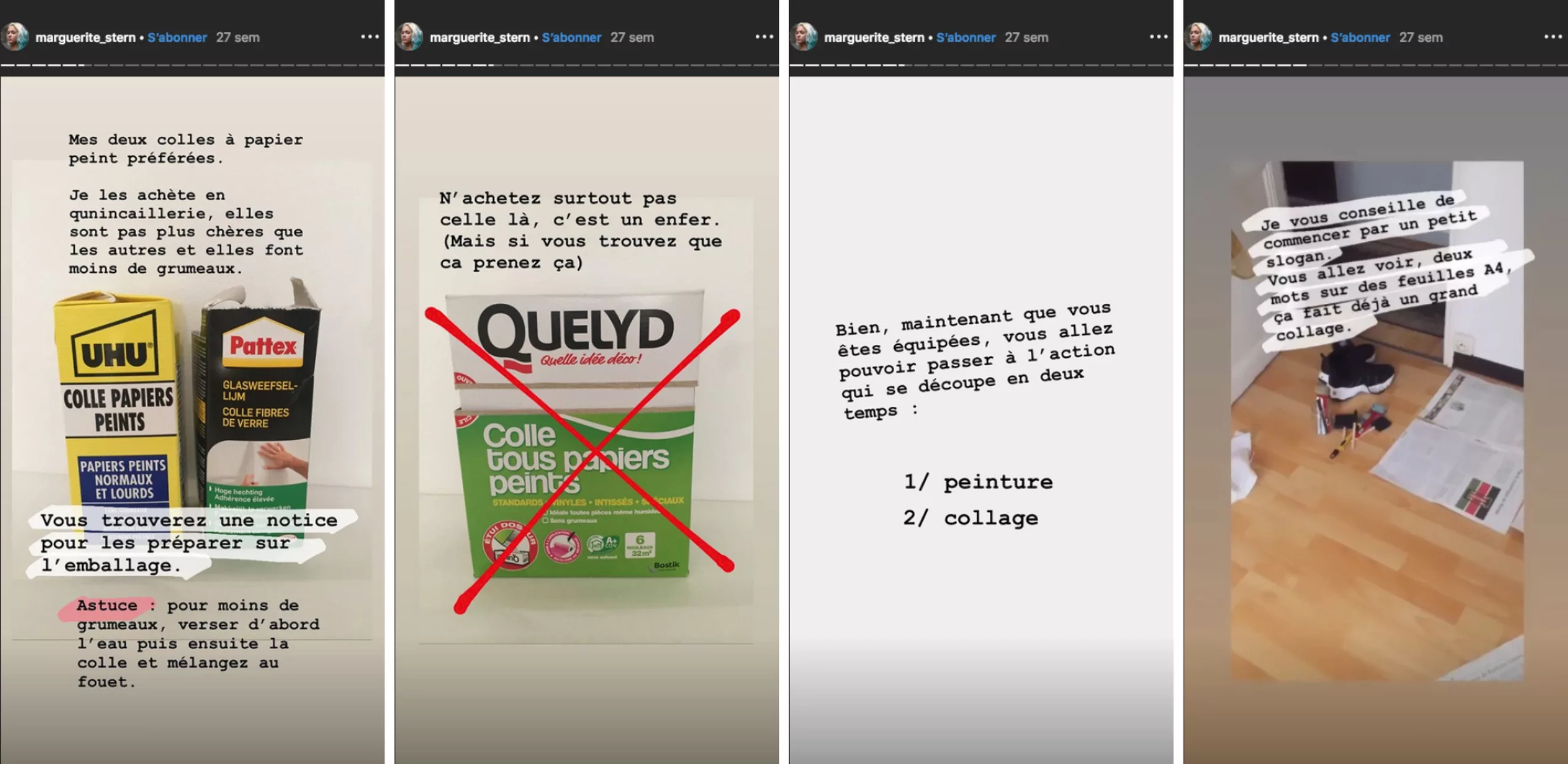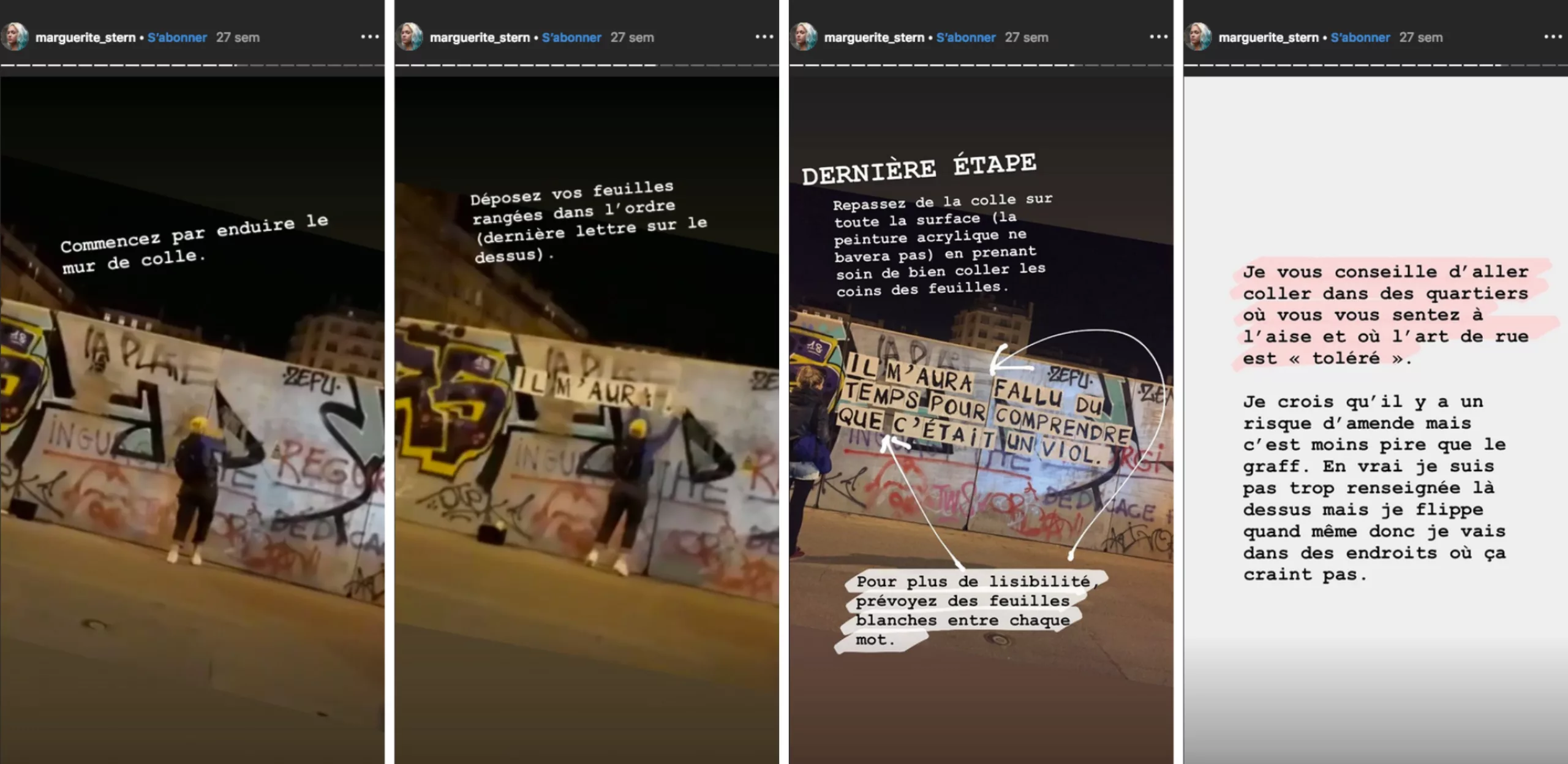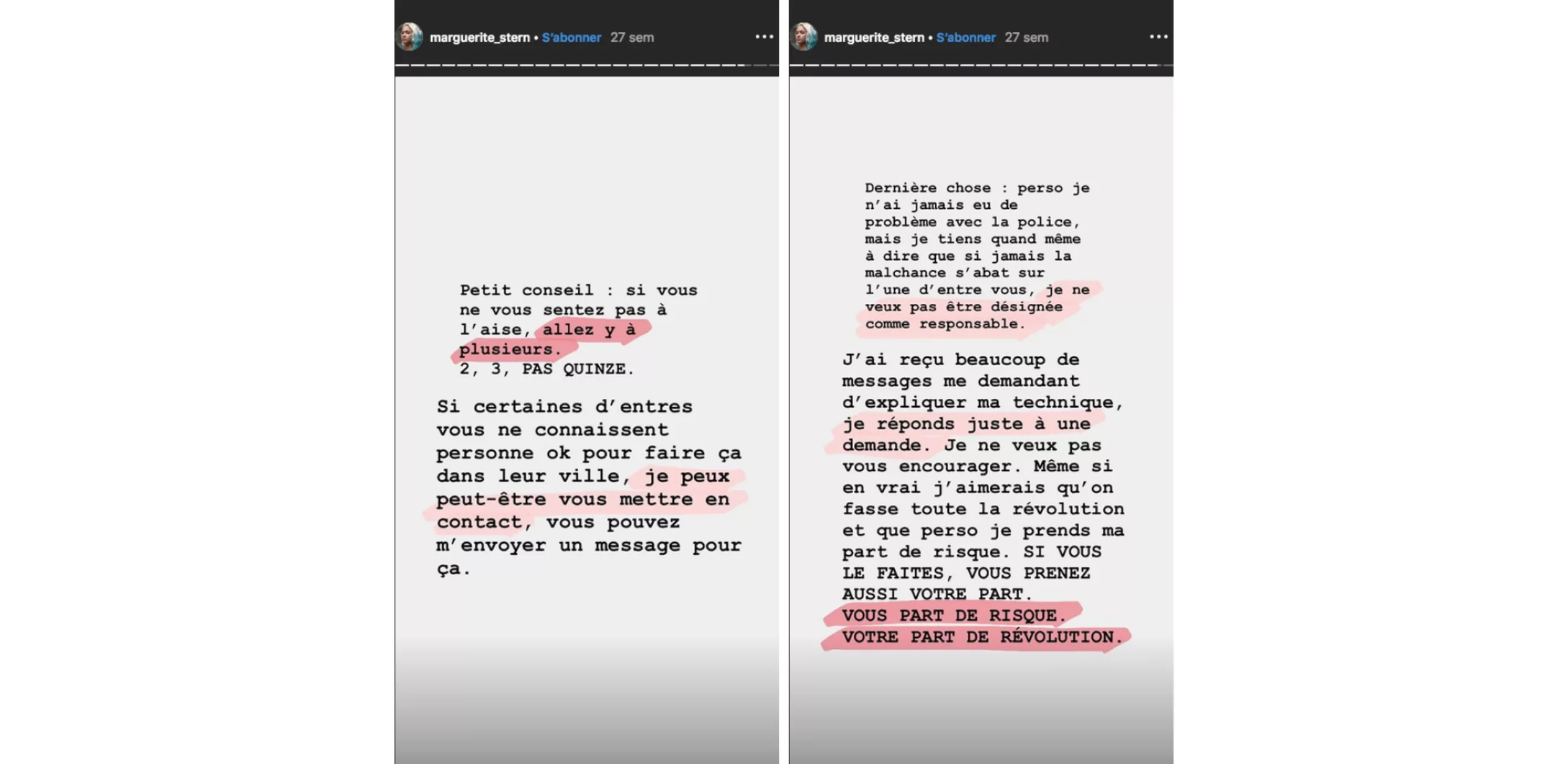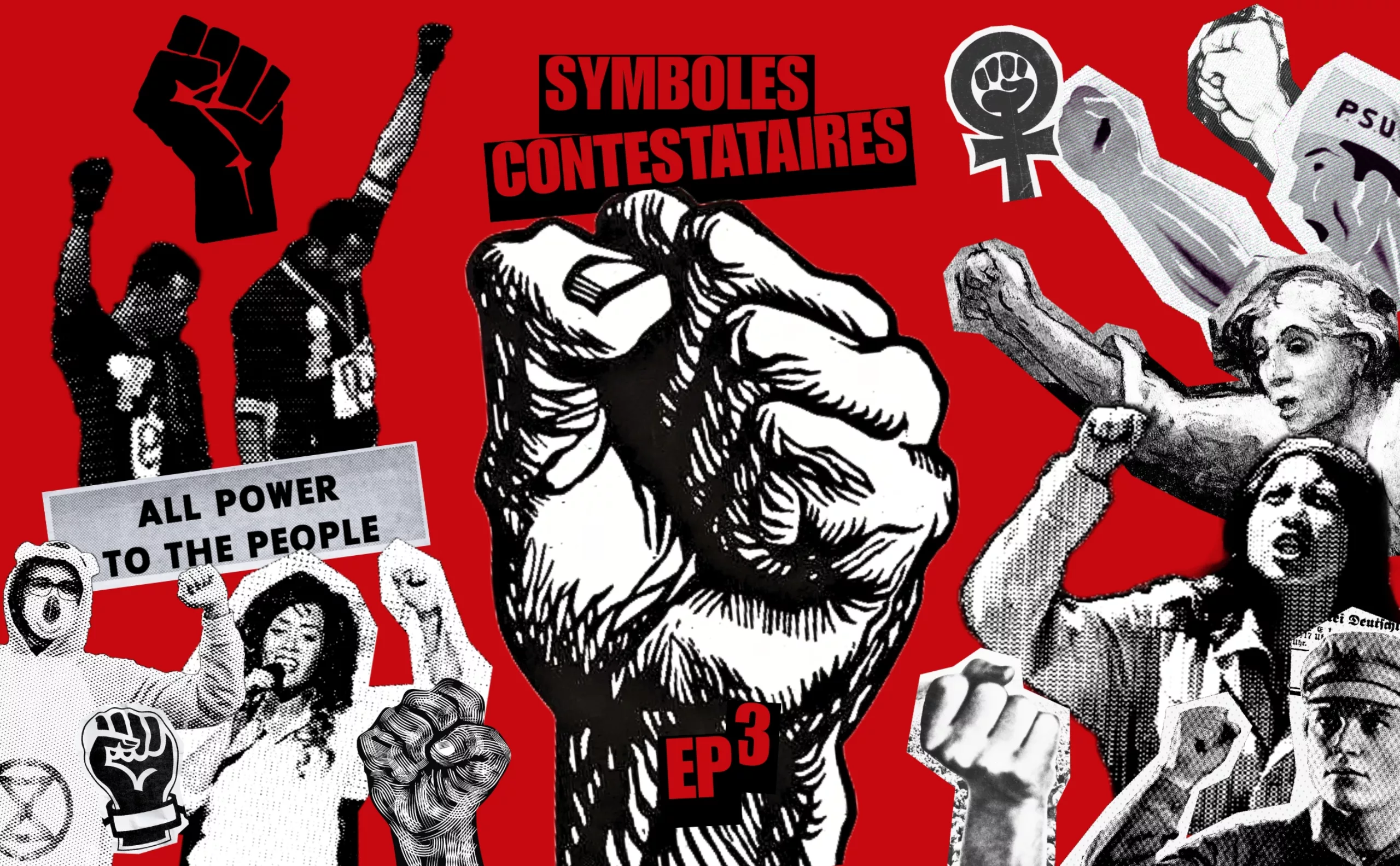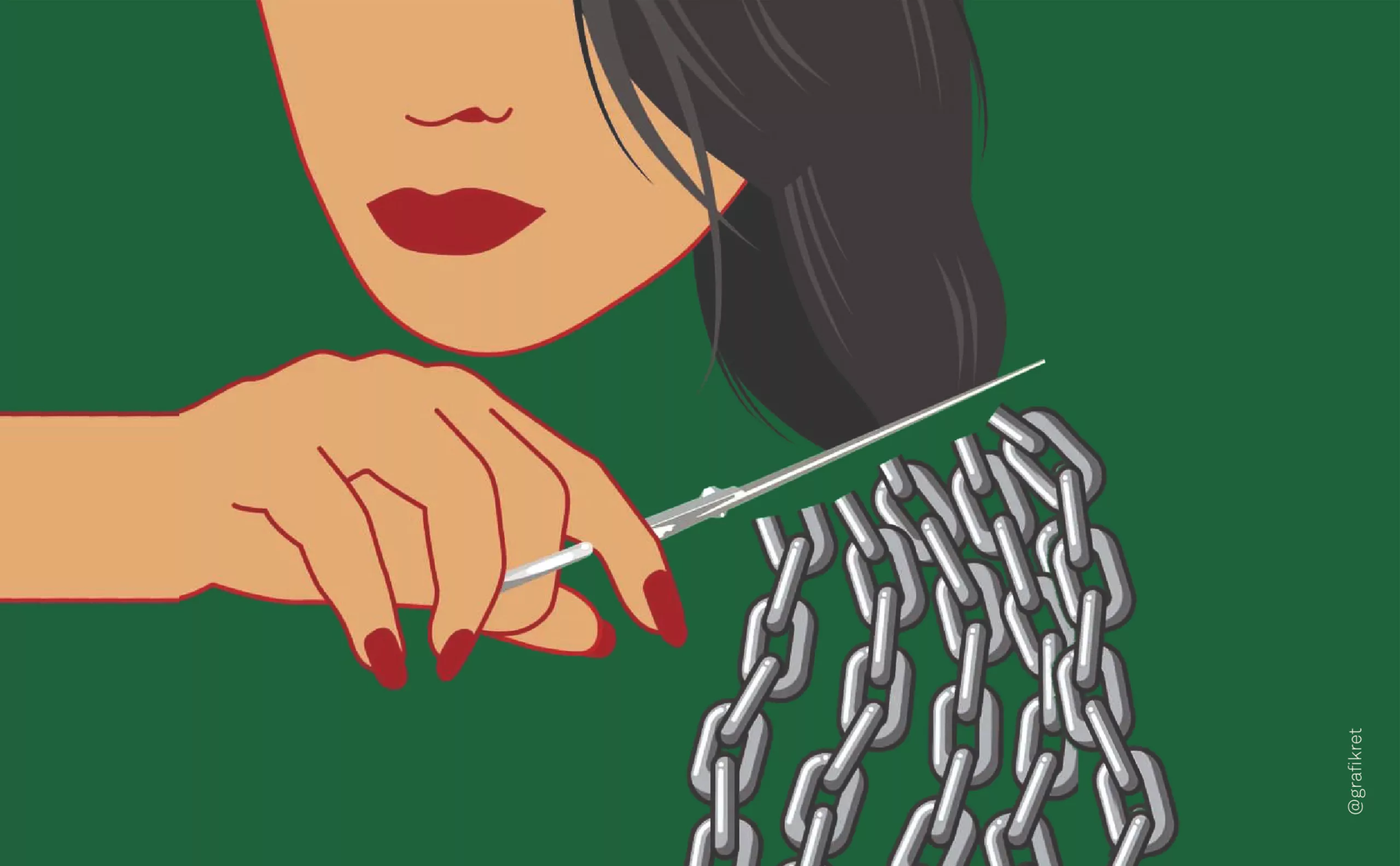The branding of a social movement: Collages against feminicides
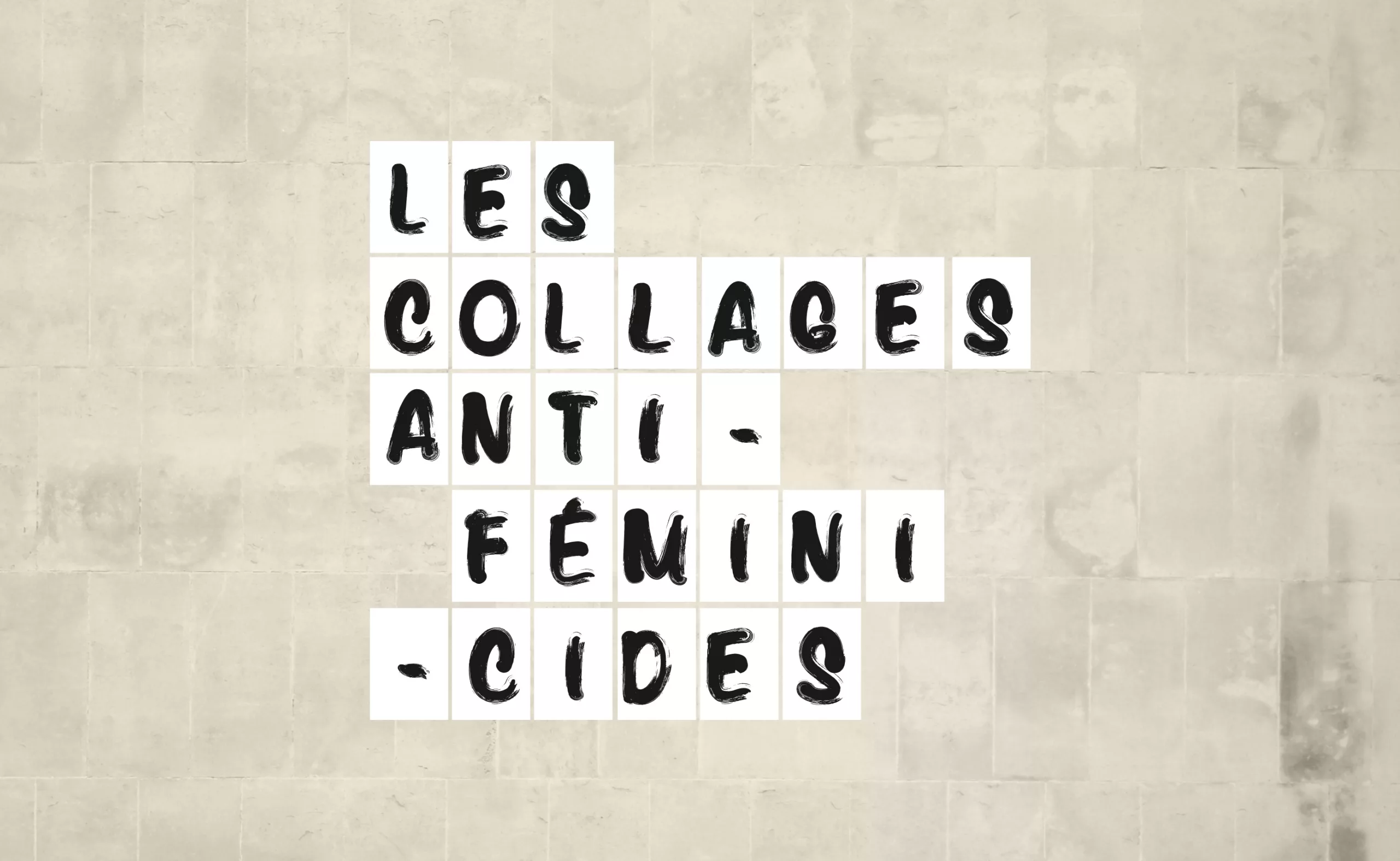
The movement did not wait for the Forum on Domestic Violence to put the names of feminicide victims on the walls of some twenty French cities. These collages impose themselves on us through a graphic system as simple as it is powerful, while the messages are designed to highlight these dramas and awaken consciences.
This long article will cover many aspects related to this social movement. We will obviously talk about feminism and patriarchy, then we will look at how this movement managed to impose its messages in the public space and the role of its “graphic charter“. Then, after a short detour through May 68, we will try to understand how the “branding of a social movement” differs from the “classic branding of brands”.
Make yourself comfortable and start Fip radio so you won’t be bothered by the commercials while you’re reading!
Bref, installez-vous bien confortablement et lancez Fip radio pour ne pas être dérangé par la publicité pendant votre lecture ! (Public radio deserves a little publicity!)

Translating : “What do you want for Christmas ? Mum alive ! ”
Father Christmas is a garbage
Let’s start the article with this picture taken next to the desk last December. Street feminicide vs. Boulevard theater? When political and commercial messages unintentionally (or not!) collide. The anti-feminicide punch-line seems specially designed to resonate with the poster of the play “Le Père Noël est une ordure” a very famous French play. We believe that relying on the surrounding messages to reinforce its purpose is a genius of communication.
This image allows us to introduce, through the figure of ” Father Christmas “, the notion of patriarchy, an inescapable notion in this subject of feminicidal collages!
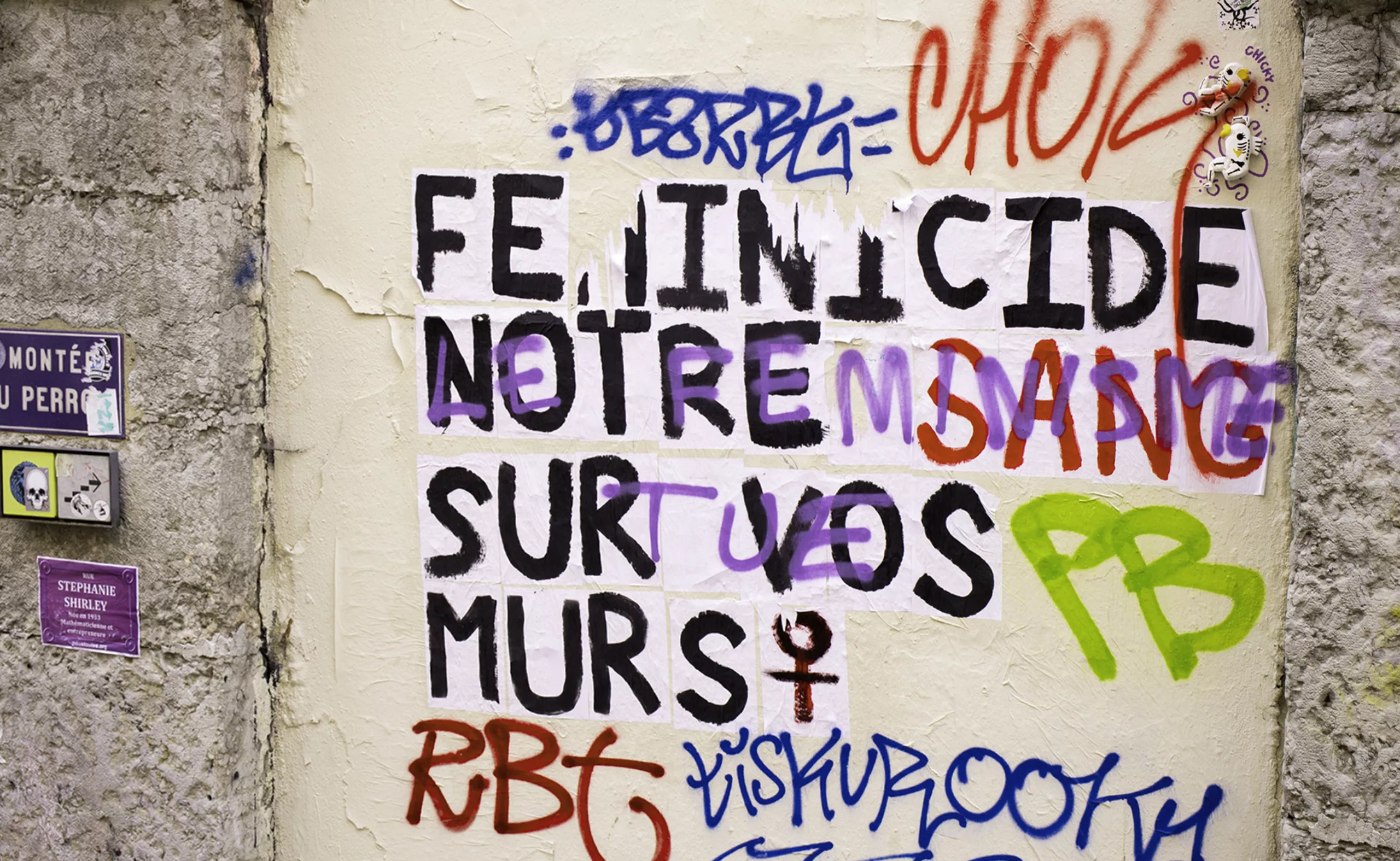
Patriarchy, from passion to hate…
As the weekly magazine named “1” writes, “Until recently there was talk of ‘crime of passion‘: a man killed his wife, he loved her too much. (…) Then there was talk of “battered women” in the 1970s (…). Since then, feminist associations have been using the term “feminicide” to mark the intolerable nature of these crimes. This expression qualifies “the murder of women by men, because they are women”. The idea is to underline the misogyny of the act and its hatred, in the same way as one would underline racist crimes, for example. Witch hunts, marital murders, dowry crimes are considered feminicides. We have to wait until 2015 for the word to enter the dictionary!
According to Ivan Jablonka, a professor of contemporary history specializing in violence against women, “feminicide is the bloody failure of patriarchy” which relegates women to maternal or subordinate responsibilities, and this only because of their biological system (uterus, breast) that allows them to give birth. As for the man, he grants himself the rest of the powers in the other external spheres (social, professional, political, economic…) Women are, men do. Patriarchy is therefore a set of symbolic violence, in general, and leading to physical violence, as in the case of feminicide.
In France, many people would think that we are far from the worst, that our society is not strictly speaking patriarchal, that women are free. This is not entirely true. And that is the problem. Feminicide is unacceptable and despicable, regardless of the cultural and social context. Patriarchy is so deeply rooted in our subconscious that it makes us believe that certain behaviours are natural, when they are purely constructed.
The writer Virginie Despentes also provides an interesting additional reading on the subject of patriarchy, recalling in “King-Kong Theory” that while women have always been victims of male violence, men too have always been the “cannon fodder” for the powerful, and that today this violence is still perpetuated through capitalism. In her view, patriarchy could only be achieved through the fight against capitalism. In a less virulent way, historian Silvia Federici, in her book “Caliban and the Witch”, tells us how, in her opinion, capitalism organized itself to make slavery and the annihilation of women a necessity for the accumulation of wealth. We already knew this, but yes, “everything is political“.
To delve deeper into these notions, and to understand how our societies have come to this point, we invite you to read the supplement at the end of the article.

Big words and big remedies
According to the count of the Collectif de Recensement des Féminicides Conjugaux en France, at the time of writing this article, 150 women in France have perished at the hands of a man they knew (companion, ex, relative…). On average, in the country of human rights, a woman dies at the hands of her companion every 48 hours.
It is in this all too murderous or enslaving context that Marguerite Stern, an ex-Femen, decides to take action: “we no longer want to count our dead” she says. On August 30, 2019, she gathers women via her instagram account to paste messages in the streets of Paris: the “feminicidal collages”. She wants to obtain concrete measures and funds from the government. Forty women answered the call. The movement has multiplied today.
The idea is to name and pay homage to the women who died at the hands of their companions by describing the facts as they are: sordid, but very real. Going out at night among women to reappropriate the public space, mostly held by men, “makes you proud, makes you strong” as one activist explains. The movement gets organized and spreads on Instagram on the accounts @collages_feminicides_(name of the city) that everyone can join in order to participate in a militant night-time collage.
The graphic identity of the collages
The technique is simple: use white sheets and cover them with black letters using a large brush. Placarded at night by militant, concerned, empathetic or simply curious women, the texts and the technique are the same all over the territory.
An extremely simple, coherent and sober visual system, but above all, within everyone’s reach, and with almost zero resources. No need for a printer, stickers or flyers to convey it. The rules to be followed do not take away the spontaneity of the gesture, and the display is recognizable everywhere despite the random nature of the handwriting. The D system inherent to this type of action imposes its style.
This is a magnificent example of a graphic charter where the letter size is standardized in A4 size and the font is a monospace. The pages are glued in a well aligned way according to the imposed grid. The main color will be 100% black and the background must be white. It is exactly as in any organization, a minimum of common rules must be respected, otherwise the impact of the collective action will be immediately diluted.
Marguerite nous donne d’ailleurs un guide de “charte graphique” complet en story sur son compte instagram :
Outlaw collages, but not too much…
Let us observe some legal aspects related to these actions of “civil disobedience“. Indeed, the Penal Code provides for different degrees of condemnation. It starts with 3750€ of fines when the damage is “light” as in the case of collages. The penalty can be increased to 7,500 euros in fines for “direct provocation to rebellion […] by posted or distributed writings” (article 433-10).
We suspect here that the choice of the pasted messages is not innocent, since none of them will explicitly incite rebellion, merely recalling facts or figures.
The use of paper (which eventually peels off) thus makes it possible to circumvent the law a little, and at least not to be in pure vandalism that would damage the walls. Vandalism is heavily punished, with fines of up to 30,000 euros and two years in prison. To date, the few glue-gluers arrested have, to our knowledge, only received reminders of the law.

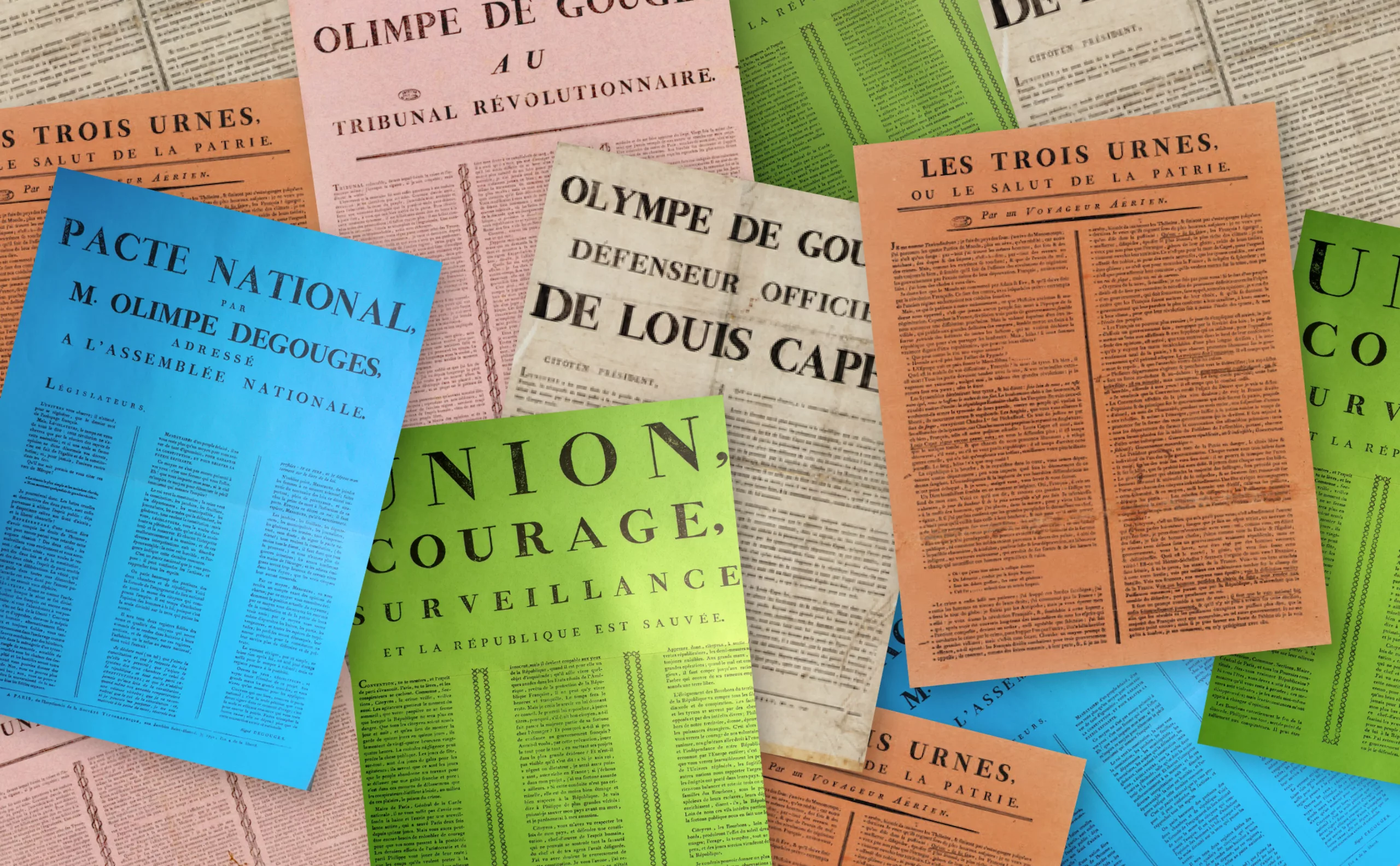
Olympus of Gouges and the multicoloured posters
It’s hard to avoid Olympe de Gouges talking about anti-feminicide collage. During the French Revolution, the pioneer of feminism was the first woman to use posters to spread her ideas. At that time, these types of posters were called “placards” and were mainly used to publicize official notices, alongside notices printed on the walls by opponents of royal power. Only the royal power had the authorization to print on white paper. Coloured paper was reserved for other types of posters. Olympe de Gouges was no exception to the rule. This royal law will be included in 1881 in the famous law on freedom of the press, only to be officially abolished in 2004!
From this heritage, graphic designers all know unconsciously what will or will not make the institutional character of a graphic creation. And therefore, the State’s graphic charter recently designed by the French government services, and imposing a large place on the white background (Posters, site headers…) is part of this logical continuity. White is order and power!
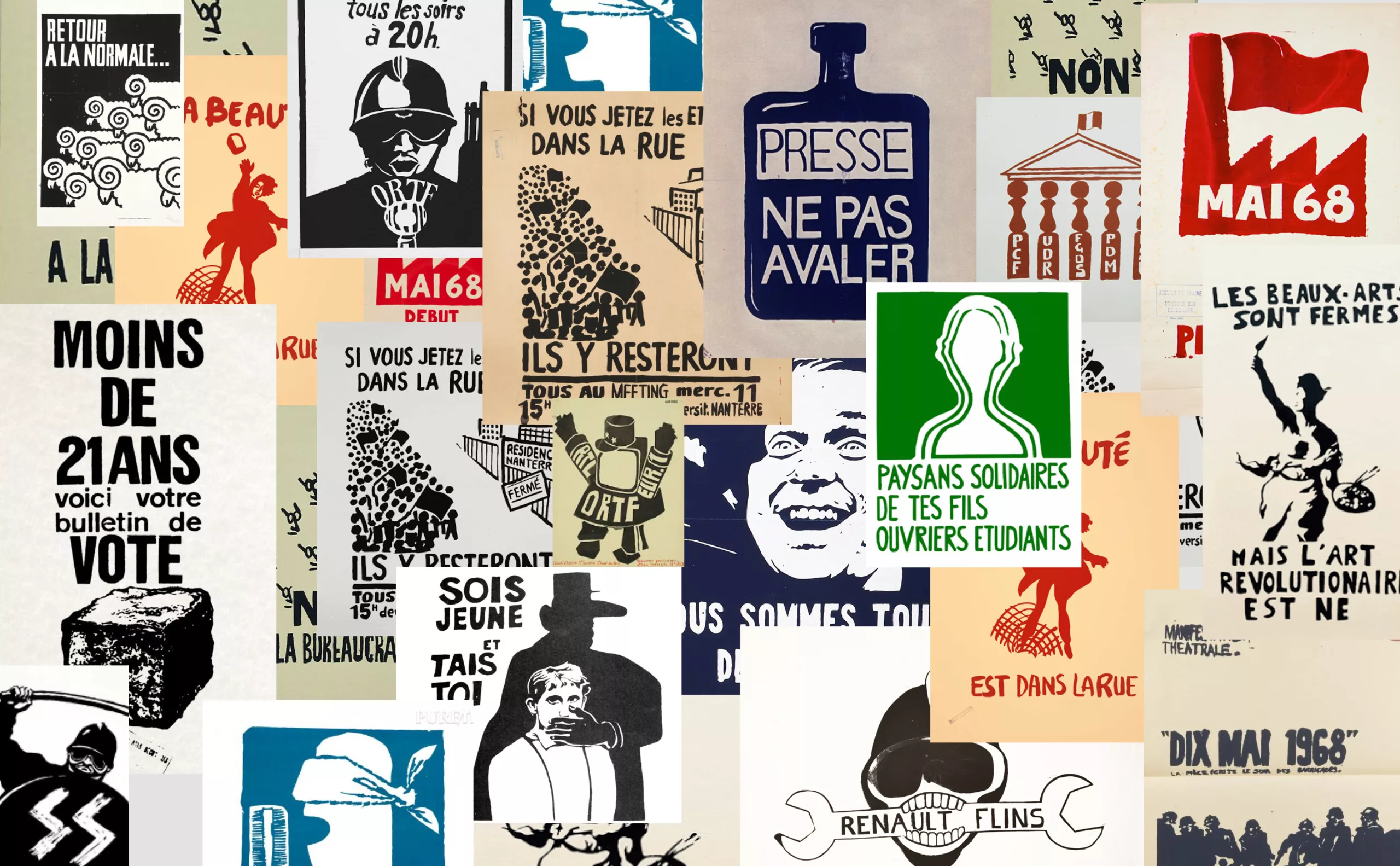
The Legacy of May ’68
Visually, the collages are halfway between manifestos and protest slogans, inherited from the posters and graffiti of May 68. Writing on the walls is the primary expression of the angry people. Or of the people in general. And it’s not new, we found graffiti on the walls of Pompeii!
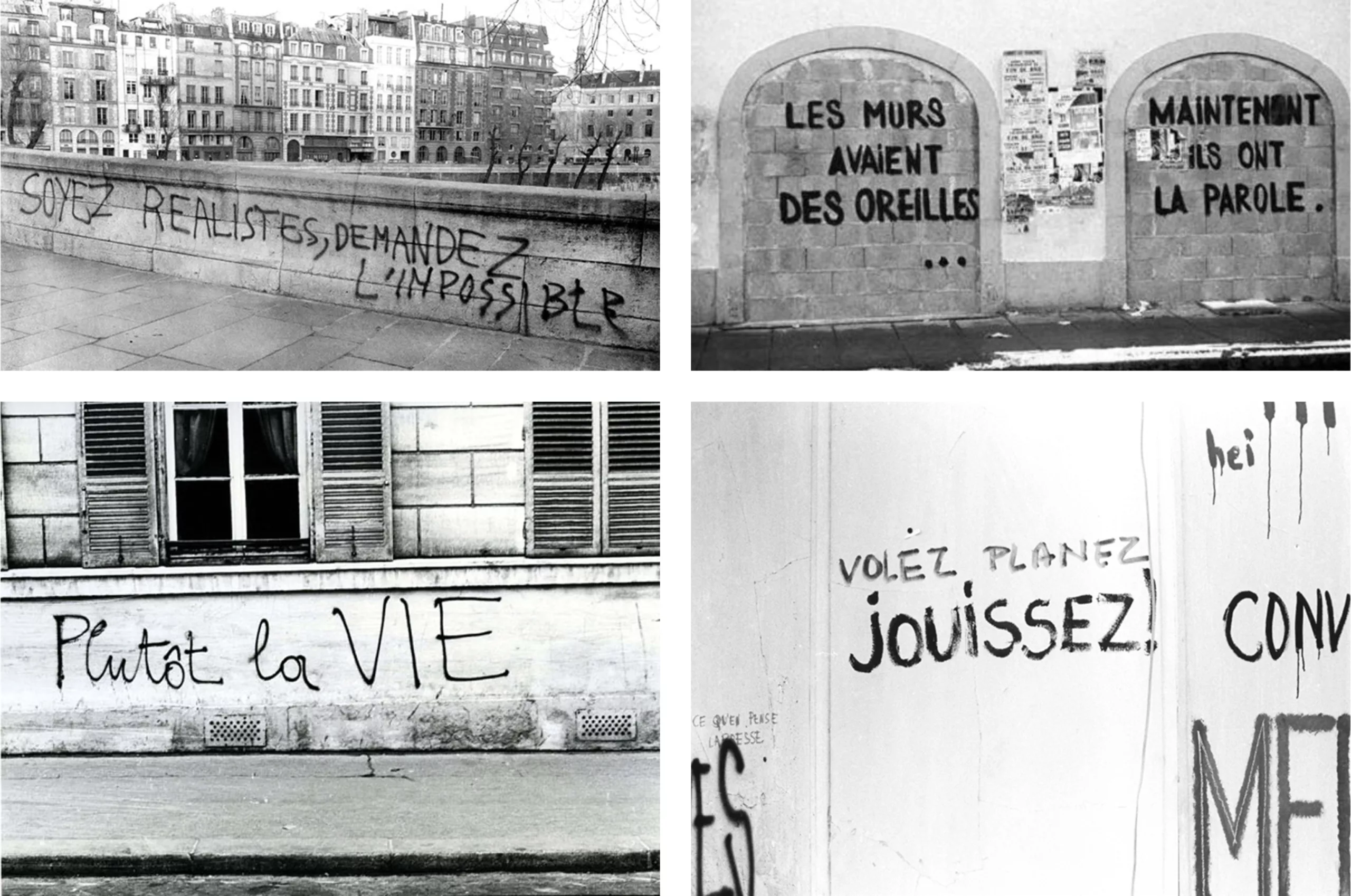
In 68, creative workshops were set up in the schools of Fine Arts (the popular workshop) and then Arts Déco, which produced craft posters to support the movement in progress, through an “active strike”. Some are purely visual, others textual. The students print on newsprint from the striking printing works. The posters are not designed to last, but to illustrate the excitement and urgency of the moment. The stencil screen printing technique, which was first used in France, was used to print quickly and extensively (in the United States, it was Andy Warhol’s favourite technique). They are simple, quick to reproduce, and inexpensive.
Poster artists are not professionals, they are young students who feel the world. This visual and creative system will become a visual and graphic legacy and will be used at events. The same technique of free and protestant postering was used in the United States in 1970, to denounce – among other things – the Vietnam war, or the inequalities towards blacks (with the slogan I AM A MAN, in Memphis in 1968).

A short typographical interlude to tell you about the graphic designer Tré Seals, who is dedicated to digitizing the lettering on social protest posters in order to bring them back to life. From the women’s suffrage movement in Argentina to the civil rights movement in America with the famous “I Am a man”. We invite you to discover his work onr www.vocaltype.co.
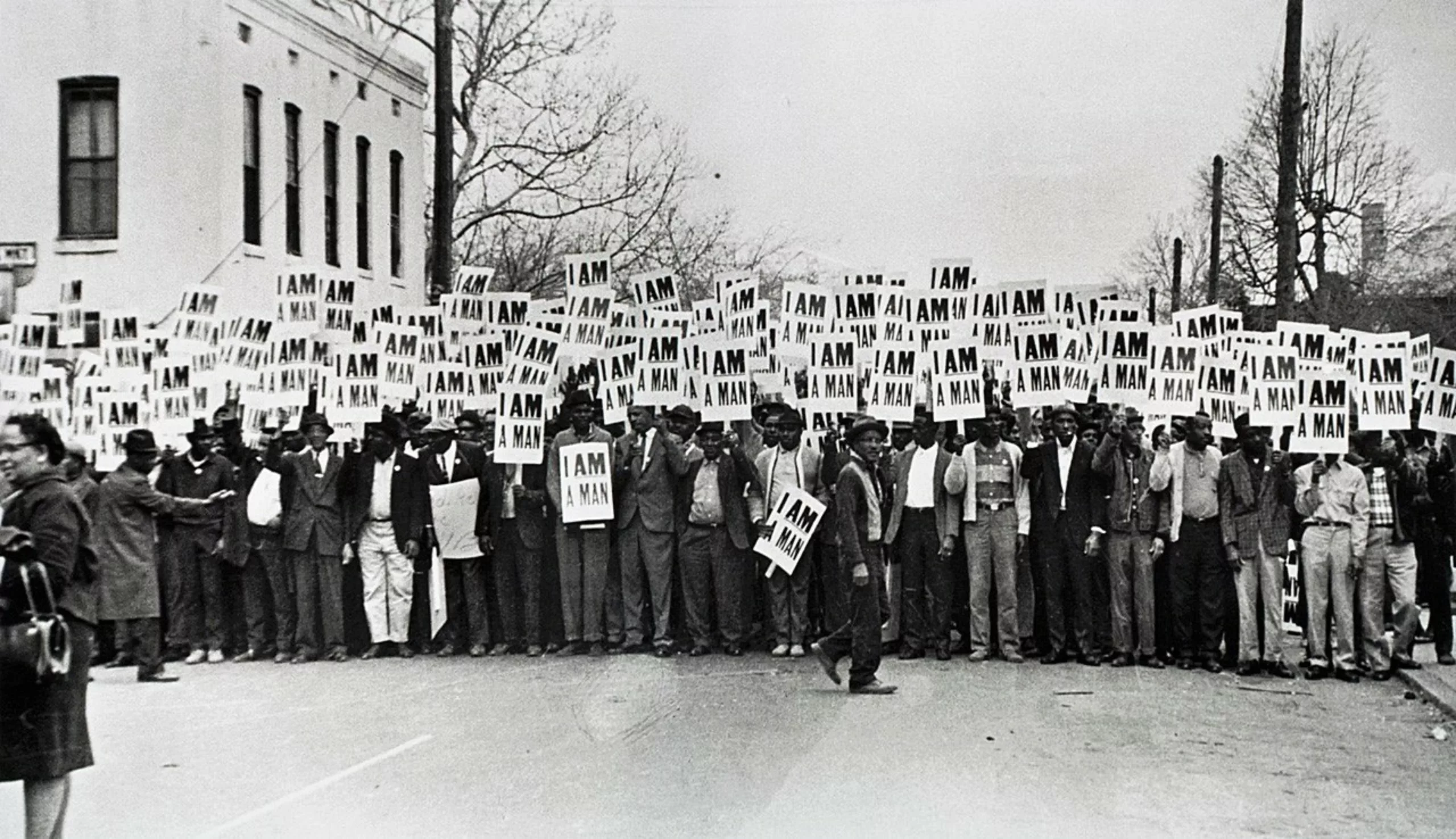
These are the messages of a suffering people, a minority that claims its existence, and expresses itself in the simplest possible way. And that is their strength: to denounce with one voice, without colourful fantasies, loud and clear. Monochromes, large letters, freehand drawings and rapid printing/execution techniques are the codes of emergency protest. This spontaneity and graphic style are today heavy with meaning and synonymous with social demands. It is this style that we find today in feminicidal collages.
Social branding
These codes and graphic systems are almost always inherited from an era, or refer to a personality or a significant event. Because they are popular, they echo the history of a people. The slogan “I am a man“, for example, refers to the American constitution, and the engraving “Am I not a man and a brother?” created in 1787 by a British abolitionist, almost 200 years earlier.

The mask of Guy Fawkes, used by Anonymous, is a tribute to the Powder Conspiracy conspiracy in 1605, whose famous moustaches can be recognized on the engraving below, used in the comic book V for Vendetta in 1989 and the film in 2005.
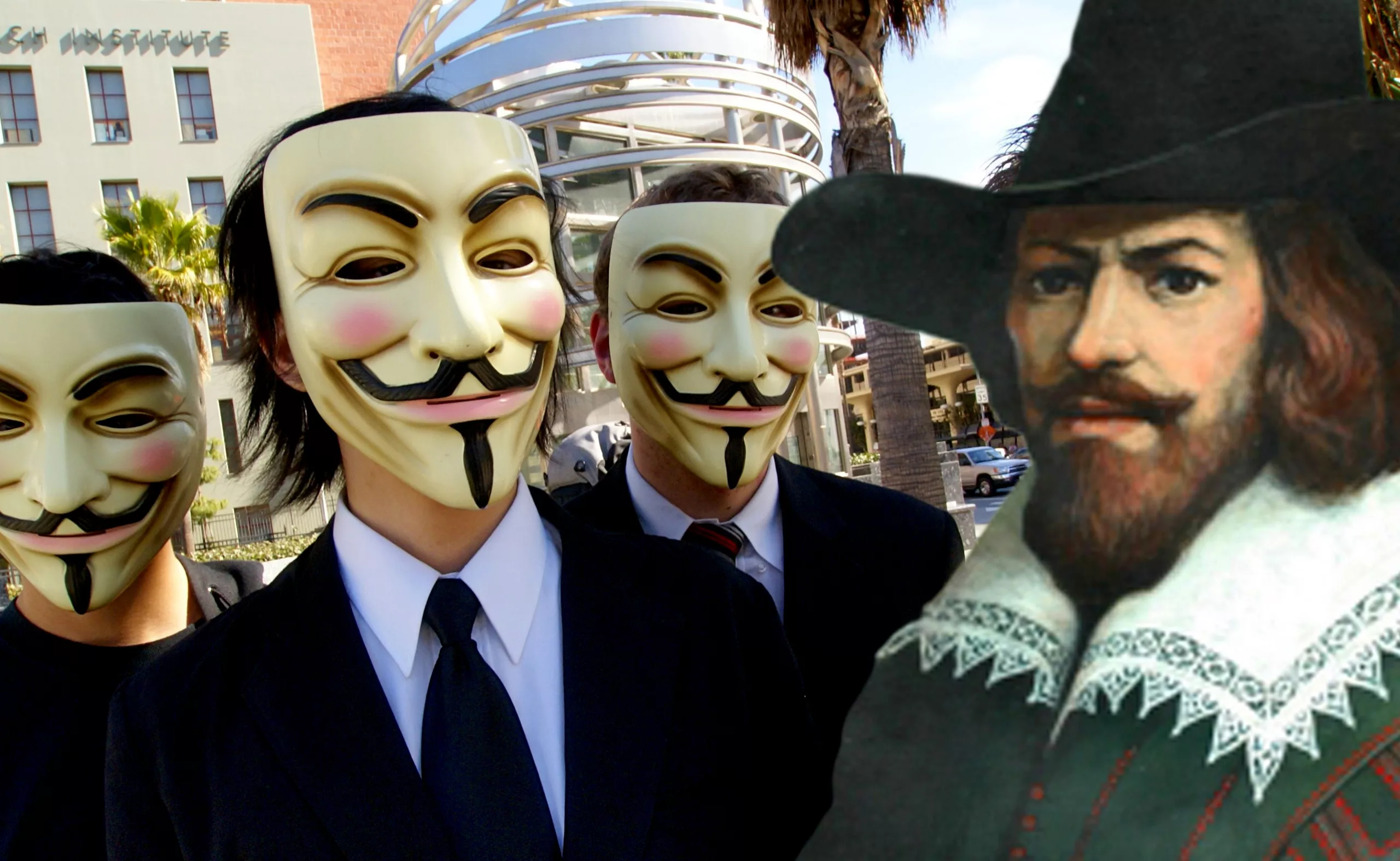
This is not the first time that a popular movement has been recognized by a particular graphic vocabulary. Although the system is close to traditional branding, it is still different from advertising work. The logic is however the same as for a brand: to gather under the same identifying sign in order to be visible and recognized in the public space. But unlike a brand, this is done with little or no means, and in a hurry (although it sometimes happens in companies too!). In the precise context of social movement identity creation, it is the people who choose and adopt it, making it truly legitimate in the eyes of all: we will rarely see customer feedback on this kind of creation…
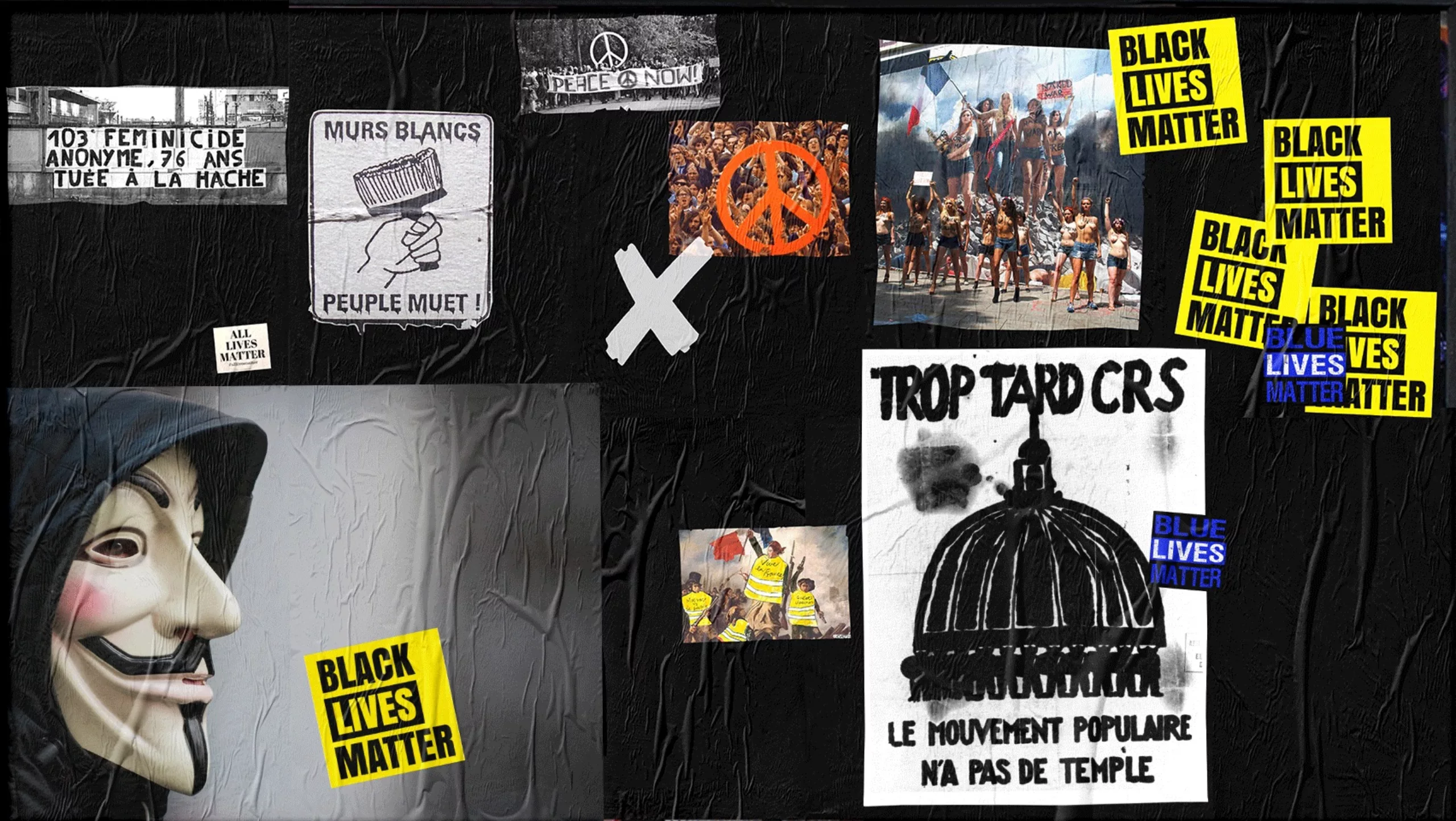
The role of the “crowdcoulture”
Formerly coming from minorities to make a claim to a territory heard, forms of social branding are now emerging from crowdculture (participative culture) movements within minorities debating very specific topics on social networks. These movements federate different individuals throughout the world, but gathered for the same cause, united by a symbol, a name, or an emblem to be seen and heard. Examples include Anonymous, Yellow Vests, Femen, Arab Spring, or movements born behind social hashtags (#metoo, #BlackLivesMatter, #WeAll…). These labels become slogans in themselves, “labels”, tags on virtual walls.
Unlike the movements of the 1970s, the demands launched by the # sometimes no longer even require a graphic identity, but are sufficient as an identity name. Minimalist, but just as effective, the graphic system of the white cross of the intermittents is also part of this lineage.
Here, then, is where the real particularity of these forms of visual identity lies: they belong to a whole community. They are participatory, and their execution must therefore be achievable by all. Everyone must be able to make it their own. With his body, a label or an acronym. With two pieces of tape for the intermittent performers, a yellow vest, A4 sheets and paint for the collages, a Guy Fawkes mask for Anonymous, lifting his T-shirt for Femen, or waving his fingers in a V shape for the hippies of the 70s.
In ’68 in France or in the 1970s in the United States, screen printing was a means of printing quickly to get a message across locally. Today, anyone can download a logo and print it, follow a technical tutorial on instagram to do it alone, or buy a mask in a costume shop. This type of branding is no longer localized, but is spread in a few clicks on the world wide web.
Once created, there is no way to control the life of this badge/slogan. We are in the public domain. Tomorrow, anyone can take these codes that belong to everyone and hijack them for another cause, without fear of accusations of plagiarism. It is a logo without being a logo, a singular brand, but accessible to everyone. The logo of the Black Lives Matter movement has moreover been hijacked into #AllLivesMatter (to defend all lives, thus removing the recognition of the black minority) and #BlueLivesMatter (to support the guardians of order, at the origin of the troubles towards black Americans). Branding debacle. For as the graphic designer Josh Warren-White, who created the BlackLivesMatter logo, explains, “designers create the logo, but social movements create the brand“.
Where social branding
divergence from brand branding
Whether they are shared on city walls or online, the visual identities of social demands are always part of a historical or popular context, and will be born out of urgency. In this way, these graphic marks act are revolutionary, in the sense that they impose themselves suddenly and collectively by shaking up our eyes and our consciences. Their strength does not come from a long and patient design work, with a designer who would have forged a powerful and memorable sign, but from an obvious urgency (thank you the chromosome of indignation!) which imposes to make radical choices that will have to be quickly adopted by the greatest number. Spontaneity, chance, or even respect of the highway code for yellow safety vests among the first anti-tax-carbon demonstrators, are therefore conducive to the birth of banners. From then on, it is the urgency of social pressure, which, by endorsing these codes, will really give these signs their strength. Their purely graphic or conceptual qualities become minor. Therefore the symbolic charge which will be transferred in these signs by the personal commitment of those who emit them.
Branding, in its traditional and commercial use, would obviously dream of being as effective, but it knows that it can never impose itself through the prism of a lightning collective adoption, and will have to make propaganda by other means. For example, by investing in the graphic and conceptual qualities of their signs, by inventing incredible storytellings, or by investing in buying advertising space and other available brain time.
If you’ve made it this far, first of all thank you for taking the time to read this long post.
We hope that it will allow you, if it was not already the case, to pay more attention to these collages, first of all for the victims, but also in the name of all feminist and humanist struggles. Do not hesitate to react by continuing the debate in the comments.

